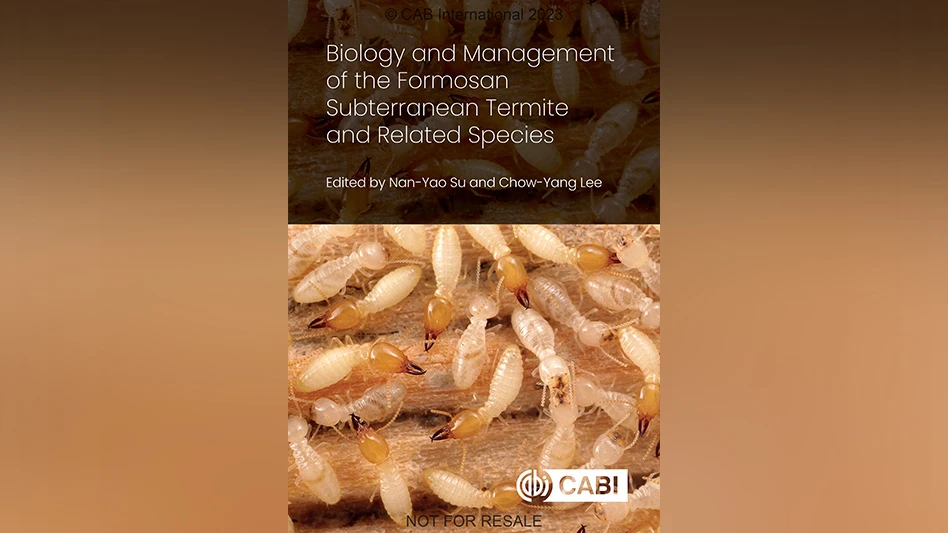
A new reference book for pest management professionals, Biology and Management of the Formosan Subterranean Termite and Related Species, was published on Dec. 15, 2023.
Edited by Drs. Chow-Yang Lee and Nan-Yao Su, it is the first comprehensive reference book compiling literature on this important termite pest species since Tokuichi Shiraki described it in 1909.
As noted in the book’s preface, “The Formosan subterranean termite, Coptotermes formosanus, holds the notorious title of being the most destructive termite species. It is the only termite species listed among the world’s 100 worst invasive alien species in the Global Invasive Species Database.”
Biology and Management of the Formosan Subterranean Termite and Related Species covers the global distribution of C. formosanus, its biogeography, and the mechanism by which it has spread from its native range in southern China and Taiwan to other parts of the world, drawing upon recorded infestations and population genetics studies.
A chapter reviews its present taxonomic status and the recent progress made in Coptotermes taxonomy. Subsequent chapters delve into the biology, ecology, foraging behavior, physiology, and chemical ecology of C. formosanus. It explores the termite’s association with endosymbionts, particularly the gut microbiota. The book also addresses inspection and monitoring and various control options against this species, including baits, liquid termiticides, wood preservatives, alternative and experimental management methods, as well as the integrated pest management (IPM) and area-wide population management approach.
Additionally, two chapters are dedicated to discussing another highly destructive species, C. gestroi, and the recently discovered C. formosanus/C. gestroi hybrids. Coptotermes gestroi represents the primary destructive subterranean termite species in tropical Asia and South America, with introductions to other parts of the world, such as the U.S. and Africa. The final two chapters offer valuable laboratory techniques to study rhinotermitids, including C. formosanus, and highlight unsolved questions that warrant further investigation.
Seventeen authors contributed to this book and each chapter was reviewed by leading global termite researchers.
The book can be ordered online at https://www.cabidigitallibrary.org/doi/book/10.1079/9781800621596.0000.
Latest from Pest Control Technology
- Donny Oswalt Shares What Makes Termites a 'Tricky' Pest
- Study Finds Fecal Tests Can Reveal Active Termite Infestations
- Peachtree Pest Control Partners with Local Nonprofits to Fight Food Insecurity
- Allergy Technologies, PHA Expand ATAHC Complete Program to Protect 8,500 Homes
- Housecall Pro Hosts '25 Winter Summit Featuring Mike Rowe
- Advanced Education
- Spotted Lanternflies, BMSBs Most Problematic Invasive Pests, Poll Finds
- Ecolab Acquires Guardian Pest Solutions





